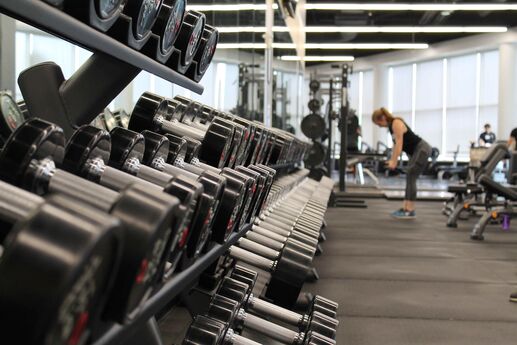Get Strong With Olympic Lifts
Looking to achieve tremendous gains in strength, speed and agility … like an Olympian? Try Olympic lifts, weight training techniques sure to chisel you into a gym warrior.
Just because you're not ski-jumping, speed skating, luging or curling like a 2010 Winter Olympian, doesn't mean you can't train like one (or like a summer Olympian, for that matter). We're talking weighlifting techniques called Olympic lifts -- a routine that well-respected exercise physiologists and personal trainers swear by for everyday gym warriors. Just a few of these classic moves go a long way to build strength, speed and agility.
The Olympic lifts can form the crux of a strength training program. Says certified exercise physiologist Greg Haff, PhD, the program can burn tons of calories and boost -- sometimes significantly -- your performance level in any sport (particularly those that require explosive movement, such as basketball, football, baseball or even tennis).
By now, you're probably thinking, "Okay, just show me the moves and I'll get going." Not so fast. Haff, an assistant professor at West Virginia University in the School of Medicine, encourages you to find a National Strength & Conditioning Association-Certified Personal Trainer or Certified Sports and Conditioning Specialist to teach you how to do Olympic lifts. Treat this like a new sport, for that's what it is -- particularly in contrast to a relatively basic gym routine. The reason: Olympic lift technique is key and very specific for each move. Plus, keep in mind that you must be free of joint problems and already possess a good strength base (you will already need to have built some strength via the standard bench/shoulder/triceps/leg presses).
If you're not ready to get a weightlifting coach or start on a full weightlifting program, here are three Olympic lift exercises that you should consider adding into your normal strength program: The Back Squat, Romanian Deadlift and Power Clean. All will build great power and strength, guaranteed.
3 Olympic Lifts to Try
Olympic Lift 1: Back Squat
Hold straight bar (with a moderate amount of weight -- such as two 25-pound plates -- in the beginning) behind base of neck.
Keep torso upright.
Bend knees and hips until thighs are parallel to ground.
Keep weight centered on heels (rather than toes) throughout the move.
Returning to the upright position.
Olympic Lift 2: Power Clean
This Olympic lift consists of 2 motions:
1st Pull
: Slowly haul the barbell (in the beginning, do with bar only, then progress by adding 10-pound plates) from the floor to your knees.
2nd Pull
: Hike the barbell from your mid-thighs to your shoulders by extending your hips in one explosive movement.
Olympic Lift 3: Romanian Deadlift
Grasp barbell (begin with two 10-pound plates, then progress from there) with wide overhand grip.
Deadlift so you're standing with shoulder-width stance.
Lower bar to top of feet by bending hips.
Bend knees during descent and keep waist straight so back is parallel to floor at lowest position.
Keep head up and in line with your spine throughout the move.
Lift bar by extending at hips and knees until standing upright.
Pull shoulders back slightly if rounded.
Repeat.
The Olympic Lift Regimen
Repeat the three Olympic lifts listed above twice a week.
And when you're ready for more, there are other Olympic lifts you can add: the Power Snatch, Overhead Squats, Snatch Grip Behind Neck Press, the Clean Pull From Floor, and 3-Way Shoulder. Ask your trainer to show you how to incorporate these moves into the rest of your routine, or visit http://www.georgiadogs.com for more Olympics lift how-tos.






